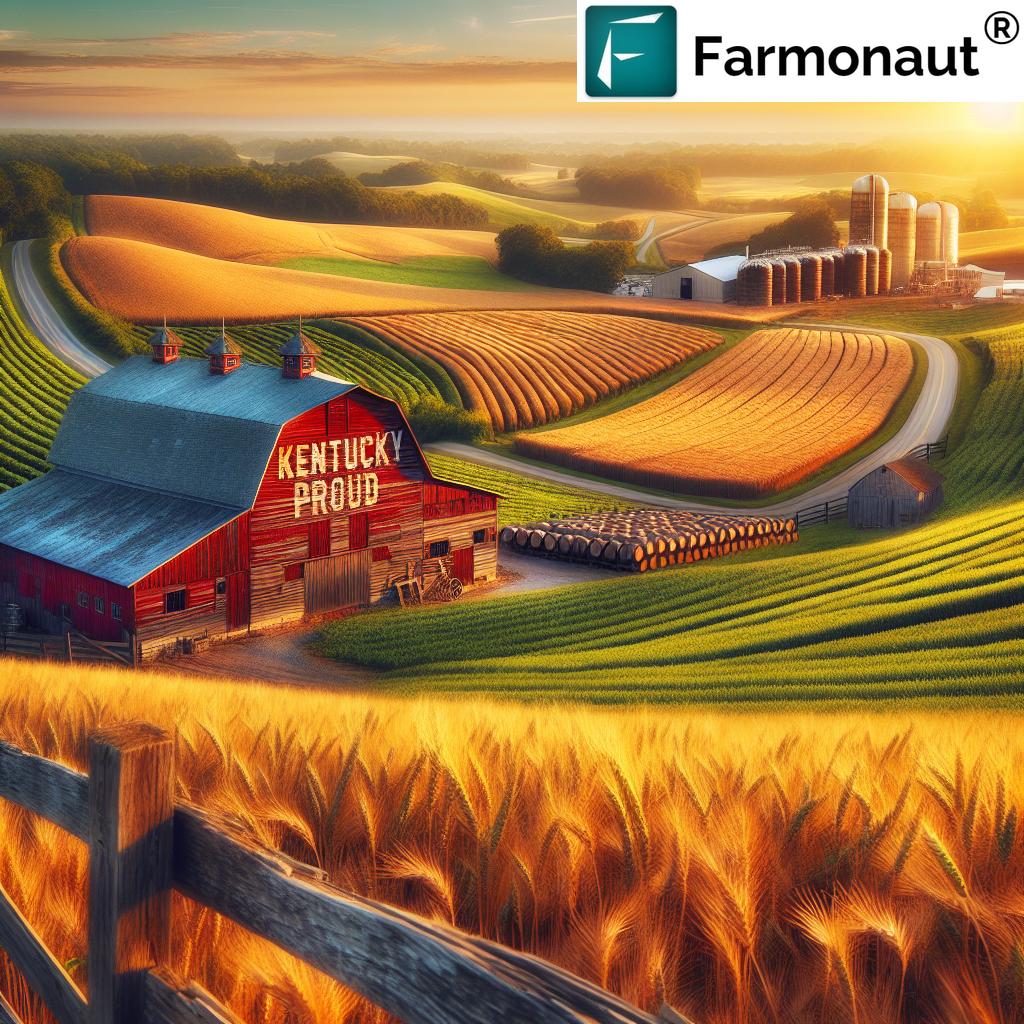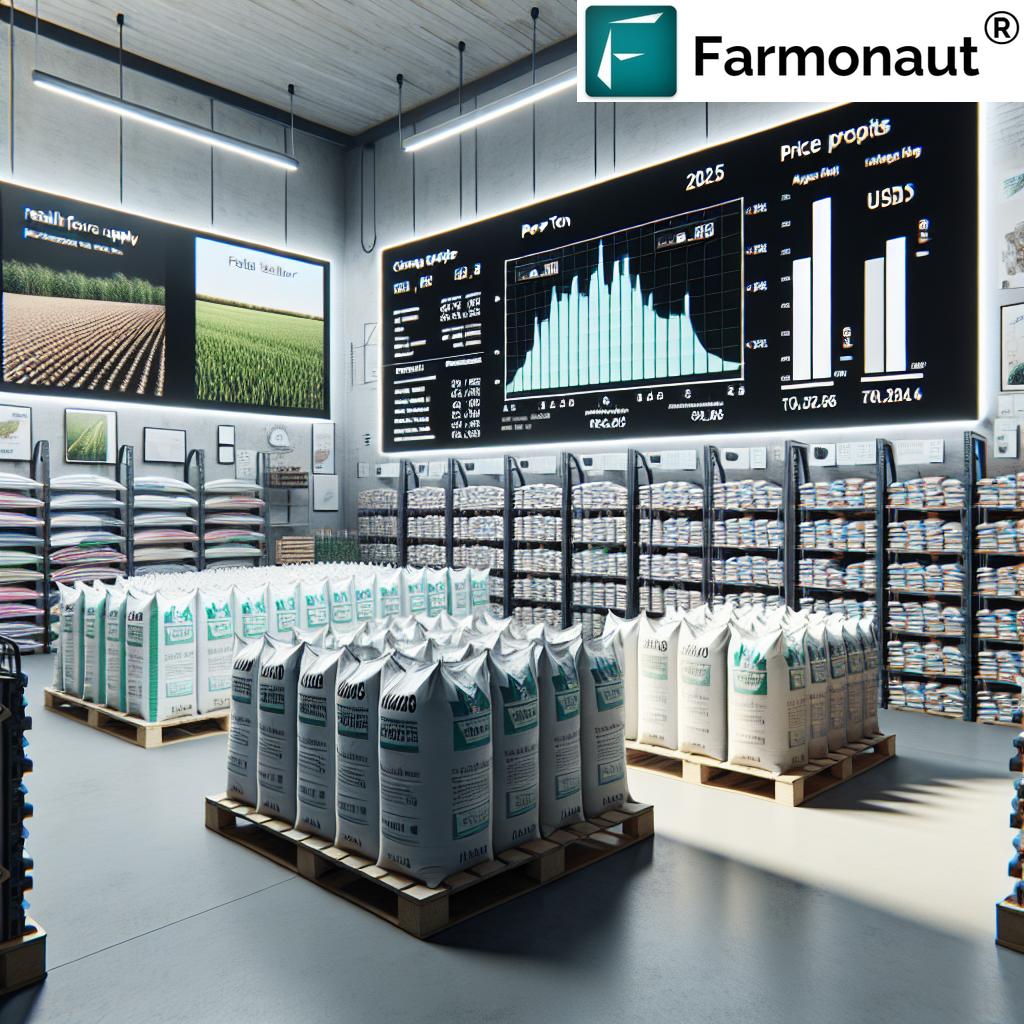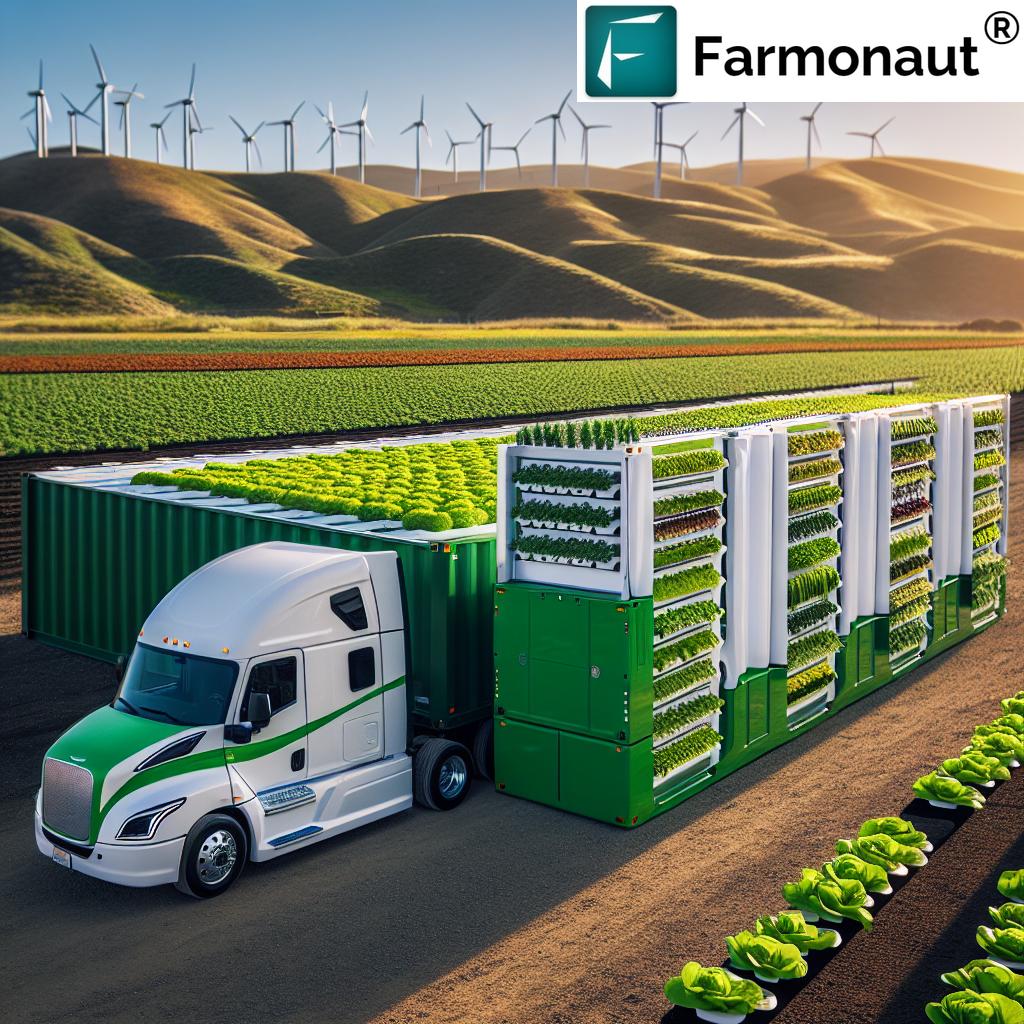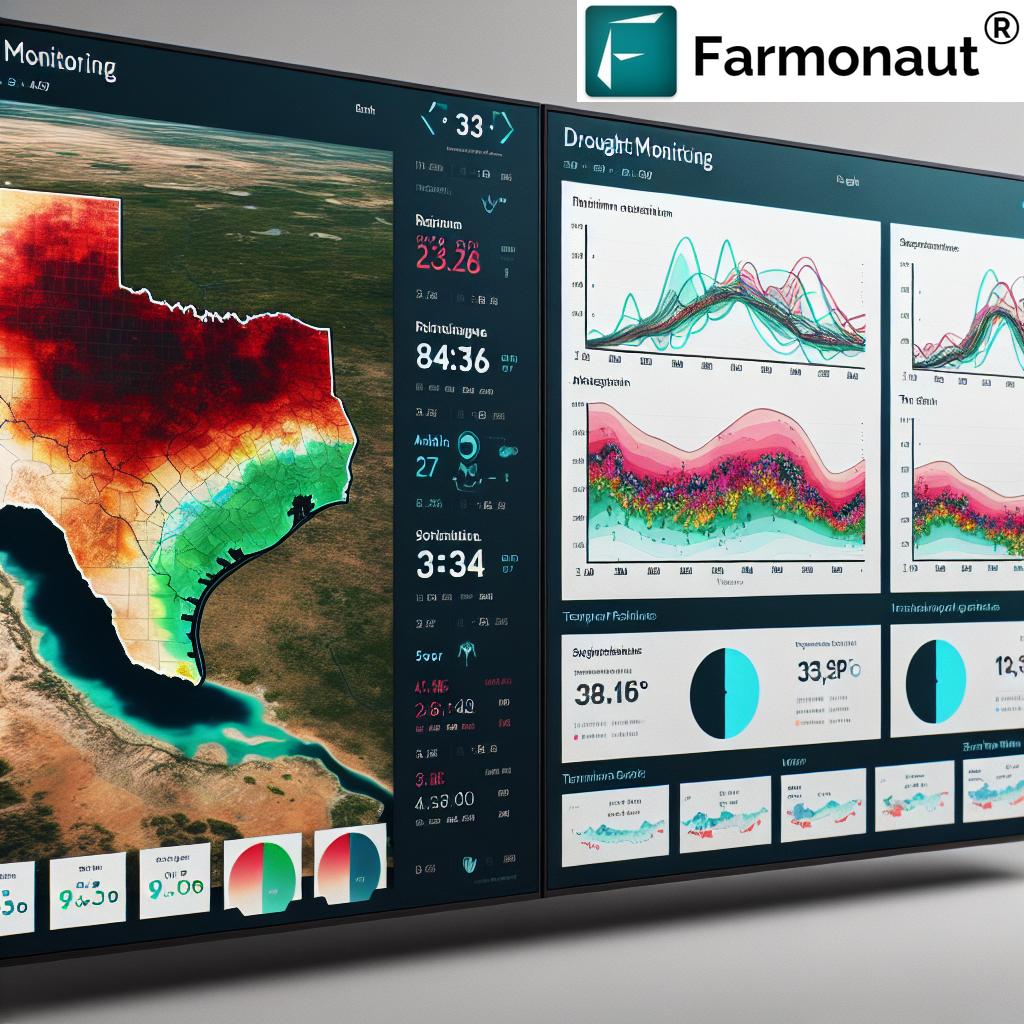Red Sunset Maple Tree, Acer Rubrum Red Sunset Forestry Guide: Sustainable Forestry & Climate Resilience
Table of Contents
- Introduction: Red Sunset Maple Tree and Forestry Sustainability in 2025
- The Importance of Maple Species in Modern Forestry and Sustainable Landscaping
- Focus Keyword: Red Sunset Maple Tree, Acer Rubrum Red Sunset
- Norway Maple Tree and Red Robin Tree: Urban and Industrial Landscaping Allies
- Sugar Maple Leaf (Acer Saccharum): Iconic Species for Culture and Economy
- Comparative Species Benefits Table
- Integrating Maples into 2025 Sustainable Forestry and Agriculture
- Modern Technology and Satellite Insights for Maple Management
- Ecosystem, Biodiversity, and Resilience for the Future
- Our Vision: Farmonaut’s Role in Red Sunset Maple Forestry & Sustainable Practices
- Frequently Asked Questions (FAQ)
- Conclusion: Red Sunset Maple Tree — A Vital Component of Sustainable Forestry through 2026 and Beyond
Introduction: Red Sunset Maple Tree and Forestry Sustainability in 2025
Red Sunset Maple Tree, Acer Rubrum Red Sunset Forestry Guide presents a comprehensive exploration of the ways in which the red sunset maple tree, norway maple tree, and sugar maple leaf species are shaping sustainable forestry, landscaping, and climate resilience in 2025 and beyond.
As environmental pressures such as climate change, soil degradation, and rapid urbanization continue to intensify, the role of resilient and aesthetically valuable maple species has become more vital than ever. These trees, with their bright autumn foliage and adaptability across varied ecosystems, are integral components of modern forestry, sustainable urban landscapes, and ecological restoration projects.
This guide dives deep into the unique characteristics, ecological benefits, and future-forward integration of Acer rubrum ‘Red Sunset’ and its relatives, providing essential insights for foresters, urban planners, landscapers, and environmental professionals as we approach 2026.
The Importance of Maple Species in Modern Forestry and Sustainable Landscaping
Maple species have long held a special place in North America and Europe’s forests and urban settings. Their adaptability, moderate growth rates, and iconic foliage make them invaluable for forestry, climate adaptation, and enrichment of biodiversity. In 2025, their significance only grows as sustainable forestry initiatives emphasize multi-purpose, resilient plantings that deliver environmental, economic, and aesthetic value to modern landscapes.
Recognized for their carbon sequestration abilities, drought tolerance, and support for wildlife and beneficial pollinators, red sunset maple tree, norway maple tree, and sugar maple leaf species are at the forefront of efforts to build climate-resilient urban and rural environments.
When considering forestry projects, urban landscaping, and mining reclamation efforts, the adaptability of these maples becomes a critical asset—offering stability for soils, valuable timber, and a source of beauty and habitat within changing ecosystems.
Focus Keyword: Red Sunset Maple Tree, Acer Rubrum Red Sunset
A Versatile and Adaptable Cultivar for Sustainable Forestry
The red sunset maple tree (Acer rubrum ‘Red Sunset’) is a standout cultivar of the native red maple, renowned for its vibrant, bright foliage that transforms to fiery red, orange, and yellow in autumn.
What truly sets the red sunset maple apart? It’s a combination of moderate growth rate, hardy adaptability to various soils—including acidic and neutral pH—and substantial tolerance for drought and urban conditions. Its shape tends to be more compact with a uniform crown, rendering it especially prized in ornamental landscaping and urban green infrastructure. For forestry projects, these qualities make Acer rubrum ‘Red Sunset’ both an ecologically and economically sound choice.
- Habitat Support: Provides vital shelter and food for native bird species and encourages pollinator presence—key for biodiversity.
- Soil Stabilization: The root system controls erosion, particularly in areas with degraded or shifting soils.
- Timber and Value-Added Products: The wood, with its attractive grain, is used for furniture, craft products, and in some regions, biomass energy.
- Ornamental Asset: Consistent coloration in fall and a neat, manageable growth habit make it ideal for urban and suburban plantings.
On the climate front, the red sunset maple tree offers consistent annual carbon sequestration—up to 22 kg of CO2 per mature tree—helping offset emissions and enhance climate resilience.
Why the Red Sunset Maple Tree Matters for Sustainable Forestry in 2025 and Beyond
- It fits the balance of ecological viability and economic value—offering yield over managed harvest cycles and supporting key ecosystems all the while.
- Its planting aligns with global restoration goals: biodiversity enhancement, mitigation of urban heat islands, and strengthening of environmental resilience in the face of climate change.
The red sunset maple is highly functional not only for forests but also for city parks, streetscapes, and restoration projects in degraded lands—making it an appealing, enduring, and forward-thinking choice for ecological enhancement.
For those interested in precise monitoring and stewardship of trees like the red sunset maple, we recommend harnessing the power of Farmonaut’s Carbon Footprinting Solutions. Our tools deliver actionable insights on carbon sequestration and ecosystem impacts across landscapes.
Red Sunset Maple’s Role in Reforestation and Restoration
With demand for climate-resilient, high-value species outpacing other maples, the red sunset maple continues to be a top pick among environmental planners and foresters:
- Managed Yield Principles: Its moderate growth supports long-term, sustainable harvesting plans, maintaining healthy stands for future generations.
- Erosion Control: Planted along slopes or reclaimed mining lands, its robust roots defend against soil loss.
- Restoration Power: When planted in clusters with native shrubs and wildflowers, biodiversity increases and the microclimate improves—bolstering both ecological and economic viability.
Norway Maple Tree and Red Robin Tree: Urban and Industrial Landscaping Allies
The norway maple tree (Acer platanoides) and red robin tree (a red maple cultivar) are both increasingly relied upon for urban and industrial landscaping efforts, particularly where tough, variable conditions prevail.
Norway Maple Tree: Adaptation and Cautions in Modern Infrastructure
Originally introduced from Europe, the norway maple (Acer platanoides) quickly gained prominence for its robust hardiness, tolerance to pollution, and ability to thrive in compacted urban soils. It is widely planted along highways, boulevards, and greenbelts, as well as in reclamation projects on former industrial and mining lands.
- Rapid Growth: Offers fast soil stabilization and canopy coverage for quick ecosystem recovery.
- Urban Infrastructure: Excels in developing green corridors in cities stricken by heat and pollution.
- Invasive Concerns: Its competitive nature can challenge native maple species. Modern practices in 2025 lean toward careful placement and integrated management to minimize potential ecosystem dominance.
This careful approach ensures the norway maple tree remains a valuable yet monitored asset in urban forestry and restoration scenarios where native flora may struggle.
For those managing large restoration or urban planting efforts, our Agro Admin System simplifies large-scale forestry and plantation monitoring using AI and near real-time satellite data. It streamlines resource management for farms, city blocks, and reclaimed urban lands.
Red Robin Tree: Reclamation and Industrial Landscaping Champion
The red robin maple—a cultivar of acer rubrum—exemplifies versatility in industrial landscaping and mining reclamation. Its adaptability to disturbed soils, strong tolerance for environmental stressors, and showy red foliage make it both functional and ornamental.
- Carbon Sequestration: Each tree contributes meaningfully to carbon capture initiatives on previously degraded lands.
- Soil Health: Leaf litter and fine roots help restore organic matter and structure, speeding up succession.
- Biodiversity Gateway: Supports invertebrates, small mammals, birds, and pollinators—boosting wildlife corridors in otherwise barren spaces.
When reclamation efforts intersect with sustainable forestry projects, red robin maples emerge as moderate growth, climate-adapted species that support both economic and environmental goals.
Need supply chain transparency for your maple-derived products? Our Traceability Solutions offer blockchain-backed visibility for wood, biomass, and ecological offsets—safeguarding sustainability claims in restoration and forestry projects.
Sugar Maple Leaf (Acer Saccharum): Iconic Species for Culture and Economy
Among the diverse genus Acer, none are more iconic than the sugar maple (Acer saccharum). Celebrated for the sugar maple leaf—a symbol of autumn and national pride in Canada—this species also underpins a substantial part of the rural economy across northeastern North America, especially for maple syrup production.
- Maple Syrup Source: The sugar maple is uniquely suited to sap collection due to its high sugar content, fuelling a multi-billion dollar industry.
- Valuable Hardwood: Its dense, beautifully-grained wood is the gold standard for high-end furniture and flooring.
- Biodiversity Anchor: Stands of sugar maple provide wildlife habitat, stabilize soils in rocky or rolling terrain, and serve as keystone species in mature forests.
In 2025, as climate change prompts shifting growth zones and new approaches to forestry management, selective breeding and assisted migration are preserving genetic diversity and productivity in sugar maple stands—ensuring sustainable yield through warmer, more variable winters.
Foresters and rural landowners can monitor and adapt sugar maple plantations with Farmonaut’s remote sensing tools, making real-time data on sap production, canopy health, and disease outbreaks accessible at their fingertips. Explore our Satellite Crop & Forest Advisory App for hands-on, data-driven forestry management.
Cultural and Environmental Impact of Sugar Maple
- The sugar maple leaf remains a beloved symbol of North American autumns, widely featured in tourism, local crafts, and educational outreach.
- Climate resilience: Research-backed efforts to adapt sugar maple to new temperature and precipitation patterns are crucial for the future of syrup production and forest health.
- Multi-layer stewardship: Combining shelterbelt functions, wildlife corridors, and timber harvest allows for a holistic, sustainable forest landscape.
Sugar Maple’s Place Among Modern, Sustainable Forestry Practices
While less common in rapid reforestation compared to the red sunset maple tree and norway maple tree, sugar maple’s economic and ecological value ensures its continued relevance — especially when coupled with responsible management strategies that safeguard both current and future stands.
Comparative Species Benefits Table: Red Sunset Maple, Norway Maple, Sugar Maple
| Tree Species | Estimated Annual Carbon Sequestration (kg/year) | Drought Tolerance | Adaptability to Climate Change | Contribution to Biodiversity | Typical Landscape Uses |
|---|---|---|---|---|---|
| Red Sunset Maple (Acer rubrum ‘Red Sunset’) |
Up to 22 | Medium-High | High | High | Urban parks, streets, reforestation, restoration, farm shelterbelts |
| Norway Maple (Acer platanoides) |
18–20 | Medium | Medium | Medium | Urban infrastructure, greenbelts, reclamation (with care) |
| Sugar Maple (Acer saccharum) |
21–23 | Medium | Medium-High | High | Maple syrup orchards, mature forests, habitat corridors, fine furniture timber |
This table enables planners, foresters, and landscape architects to quickly compare the primary ecological and economic strengths of the most prominent maple species in sustainable forestry and resilient landscape design for 2026 and beyond.
Integrating Maples into 2025 Sustainable Forestry and Agriculture
In the evolving landscape of sustainable forestry and agriculture, planting strategies for maple species have become increasingly sophisticated—integrating satellite data, climate projections, and ecological modeling to achieve the highest impact.
Agroforestry, Mixed-Use Plantings, and Supporting Biodiversity
- Red sunset maples line farm fields and pastures, offering windbreak protection and vital pollinator habitat.
- Norway maple trees and red robin trees are utilized to quickly green mining reclamation sites, stabilizing soils and supporting the re-establishment of native flora in subsequent years.
- Sugar maple leaf stands fill dual roles as economic assets (syrup and timber), while doubling as corridors for migratory birds and pollinators.
By integrating red sunset maple tree and relatives into land reclamation, afforestation, and agroforestry projects, land managers create landscapes that are not only productive but also resilient and supportive of native biodiversity.
To manage reclamation and afforestation efforts seamlessly, explore our Fleet Management Tools which allow tracking of machinery and resource allocation across expansive forest and restoration zones.
Soil Improvement: The Maple Advantage in Reclamation and Restoration
Leaf litter from red sunset, norway, and sugar maple trees enhances soil organic matter—improving fertility and water retention while buffering against temperature swings. This soil-building trait is crucial in areas recovering from mining, intensive agriculture, or urbanization.
- Degraded soils benefit from the addition of maple species, as the trees’ organic input helps restore microbial activity and nutrient cycling.
- Acidic to neutral pH buffer: Both red sunset and sugar maples tolerate a range of soil types, making them ideal for restoration across diverse landscapes.
- Long-term stabilization: Deep roots facilitate water infiltration and further protect fragile sites against erosion and runoff.
Bolster your soil management practices with precise satellite insights available via our API and the in-depth guidelines in our API Developer Docs for advanced, custom integrations.
Maple Growth, Harvest, and Economic Value in 2026 and Beyond
- Managed maple stands integrate harvest rotations, soil enrichment, and habitat creation for sustainable, multi-benefit landscapes.
- A moderate growth rate enables sustainable harvest cycles and regeneration for both timber and biomass projects, especially relevant in rural and peri-urban settings.
- Furniture and craft market: Red sunset and sugar maple woods remain highly sought after for locally-crafted, premium products.
Modern Technology and Satellite Insights for Maple Management
With advances in satellite imagery, AI advisory, and blockchain traceability, 2025 ushers in a new era of precision forestry for maples. We at Farmonaut are proud to empower landowners and professionals to meet environmental and economic goals using real-time, affordable remote sensing tools.
- Vegetation Health Monitoring (NDVI): Track maple health, stress, and canopy vigor across hundreds or thousands of hectares from any device.
- Soil Condition and Moisture Tracking: Supports optimal planting, irrigation, and drought resilience strategies for every stand.
- Traceability and Transparency: Blockchain ensures the integrity of timber and syrup supply chains, essential for regulatory compliance and marketplace trust.
- AI-Driven Advisory Systems: Provide adaptive recommendations for planting, harvesting, and restoration interventions as environmental conditions shift year-to-year.
Try precision forest and crop advisory now with our Crop Plantation & Forest Advisory Solutions—designed for modern forestry enterprises, restoration agencies, and conscious land stewards.
The Future of Maple Management—Secure, Scalable, and Science-Driven
Satellite technology integrated with machine learning and AI is revolutionizing the stewardship of red sunset maple tree, acer rubrum red sunset, norway maple tree, red robin tree, and sugar maple leaf landscapes:
- Early Detection: Issues with pests, disease, or drought appear in satellite data before visible symptoms, allowing preventative action.
- Large-Scale Coordination: Forest managers with thousands of acres can monitor, plan, and execute sustainable strategies remotely and collaboratively.
- Environmental Impact: Data capture on carbon, water, and soil improves reporting for carbon credits, green finance, and regulatory compliance.
All these elements are crucial for resilient maple forestry and landscaping practices through 2026 and beyond.
Ecosystem, Biodiversity, and Resilience for the Future
The collective impact of widespread maple planting—red sunset maples, norway maples, and sugar maples—extends well beyond aesthetics or economics. These species underpin ecosystem services vital to human and environmental health:
- Supporting pollinator and bird diversity, with autumn fruit and cavity-nesting opportunities
- Stabilizing urban microclimates by reducing heat island effects
- Filtering air and water pollutants in cities and along riparian corridors
- Promoting sustainable transitions from degraded or deforested land back to thriving, perennial green cover
As shifts in weather, pest populations, and society’s needs accelerate in the years ahead, maple species will remain at the heart of adaptive and sustainable forestry, supporting prosperity and resilience across continents.
Our Vision: Farmonaut’s Role in Red Sunset Maple Forestry & Sustainable Practices
At Farmonaut, our mission is to make advanced, satellite-based environmental insights accessible and affordable for forestry professionals, planners, and landowners working with species like the red sunset maple tree and its relatives.
- We provide multispectral satellite imagery and AI-driven advisory for tree health, yield, soil monitoring, and resource inventory—all via web and mobile apps, as well as direct API integration.
- Our platform supports:
- Sustainable agroforestry and reforestation across thousands of hectares
- Traceability for certified wood and maple-based products
- Real-time data for optimizing plantation and harvest cycles
- Environmental impact reporting for carbon credits and sustainable procurement
- With our subscription plans (see below), forestry initiatives large and small can accurately track, plan, and manage maple-based landscapes for ecological and economic returns well into the future.
Frequently Asked Questions (FAQ)
Q1. What makes the Red Sunset Maple tree a superior choice for sustainable forestry projects in 2025?
The Red Sunset Maple tree (Acer rubrum ‘Red Sunset’) offers a unique combination of vibrant autumn coloration, adaptability to soil pH, moderate drought tolerance, and consistent growth. Its moderate carbon sequestration, biodiversity support, and suitability for both urban and rural plantings make it essential for climate-resilient and visually appealing landscapes.
Q2. Is the Norway Maple tree still recommended in urban forestry despite its invasive characteristics?
Norway maple tree (Acer platanoides) is still used for pollution-tolerant, rapid greening in harsh urban settings, but experts are cautious. The key is integrated, managed use in areas with challenging soils and limited native vegetation, with ongoing monitoring to prevent overdominance of local plant communities.
Q3. How is sugar maple (Acer saccharum) adapting to changing climatic zones for maple syrup production?
Sugar maple leaf species are adapting through selective breeding, assisted migration, and advanced monitoring strategies supported by satellite technology. These efforts safeguard both syrup yield and biodiversity in aging forests as temperature and precipitation patterns shift.
Q4. How do I monitor carbon impact and growth of maples in my forestry or reclamation project?
With Farmonaut’s carbon footprint monitoring platform, users access near real-time insights on carbon sequestration, soil health, and vegetation vigor—streamlining reporting for credits, compliance, and sustainable management.
Q5. Can I use Farmonaut to trace maple syrup or timber products for certification?
Yes. Our Traceability Solution employs advanced blockchain technology, ensuring the authenticity and transparency of maple-derived goods throughout the supply chain.
Conclusion: Red Sunset Maple Tree — A Vital Component of Sustainable Forestry through 2026 and Beyond
The Red Sunset Maple tree (Acer rubrum ‘Red Sunset’) and its maple relatives—including norway maple tree (Acer platanoides) and sugar maple leaf (Acer saccharum)—stand as integral components of resilient, productive, and beautiful forests and urban green landscapes in 2025, 2026, and beyond.
Their ability to stabilize soils, sequester carbon, support biodiversity, and provide economic resources—all while delighting the eye with seasonal displays—makes them a cornerstone for planners, foresters, and landowners committed to sustainable, science-driven stewardship.
As climate pressures and urbanization escalate, the smart integration of species like the red sunset maple—supported by modern technologies such as Farmonaut’s satellite insights—ensures thriving, future-ready forests, cities, and reclaimed lands for generations to come.
Manage Maple Forestry and Restoration the Smart Way
Monitor, plan, and optimize maple-based landscapes easily with the Farmonaut Platform—online, on mobile, or via API.
Empower your forestry, landscaping, and reclamation projects with real-time data, sustainability, and science. Choose Red Sunset Maple, make the most of its intrinsic value, and manage your landscape for a thriving, climate-adapted future.














